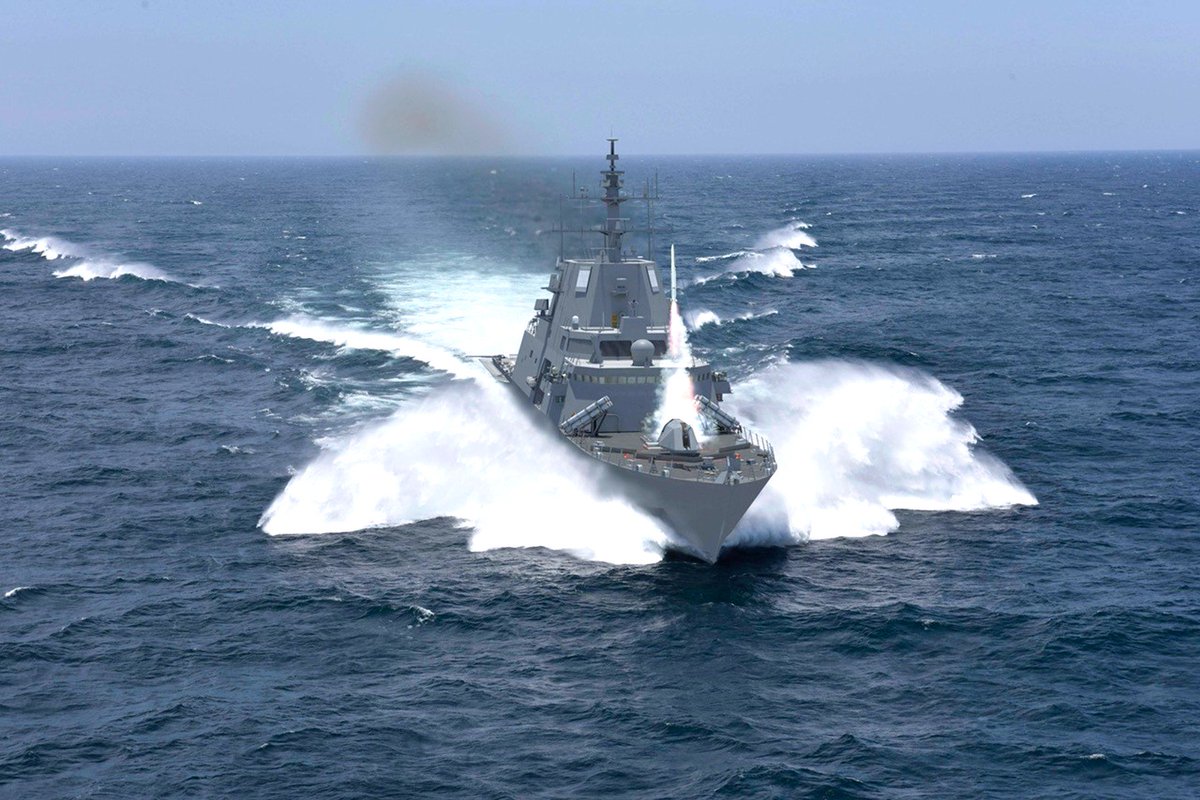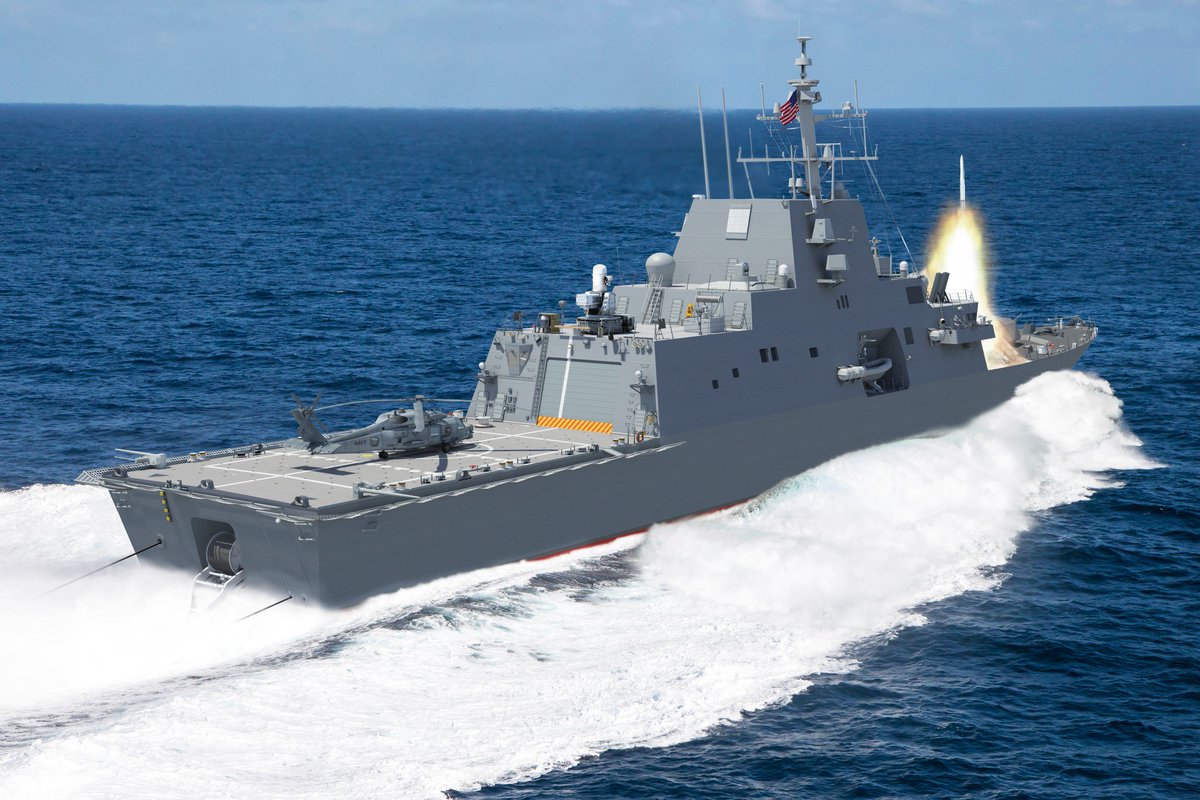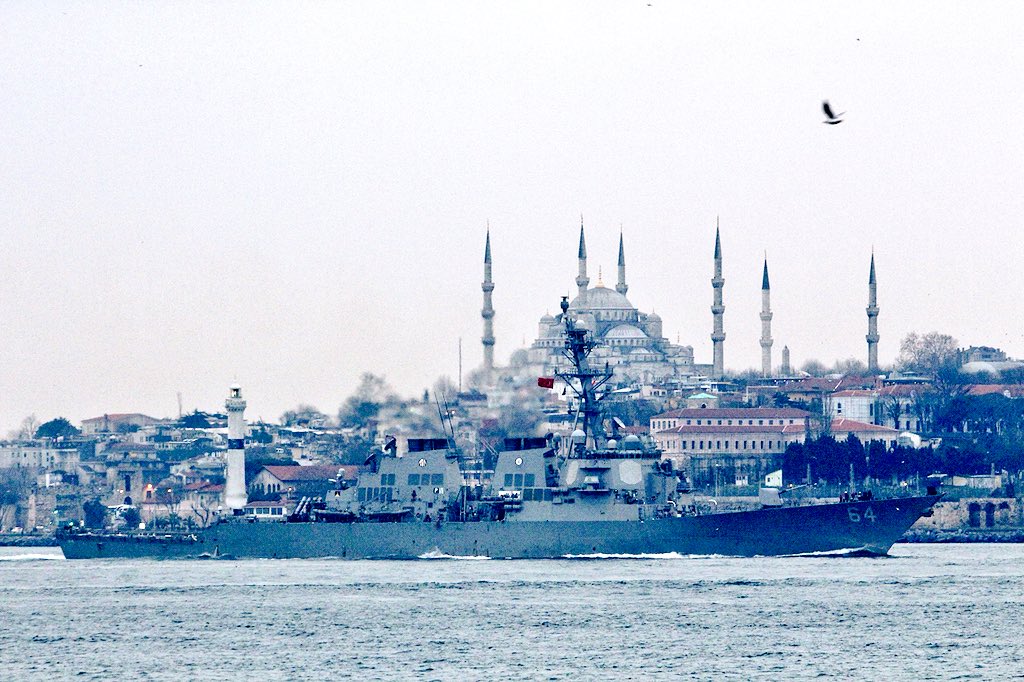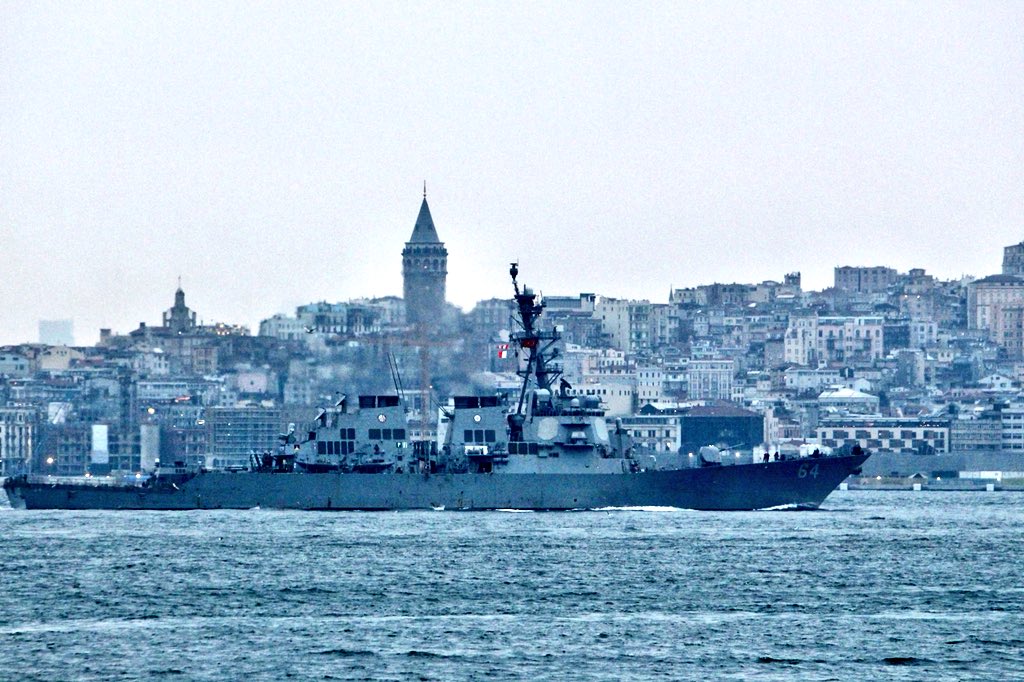TerraN_EmpirE
Tyrant King
Any option bought for the Job would be built in the US.after
Navy Picks Five Contenders for Next Generation Frigate FFG(X) Program
just one thing from me:
Jul 13, 2017
Any option bought for the Job would be built in the US.after
Navy Picks Five Contenders for Next Generation Frigate FFG(X) Program
just one thing from me:
Jul 13, 2017
well for me a Tank is a Tank, and an IFV is an IFV (but you're probably right and the Pentagon will go on for 'modularity', commonality', 'concurrency' and stuff)More likely a family of Vehicles. for example 3 chassis variants with common elements that can then be configured to fill jobs. A Artillery chassis that could become a Mortar vehicle or a howitzer maybe even a replacement for the MLRS and C-RAM, a APC chassis that can be APC, IFV, Scout, Logistics, Ambulance and command vehicle, A Tank Chassis for MBT and Engineering and Recovery maybe even a fourth unmanned chassis for scouting and support They might share Power packs Track wheels and track links and pads but the Artillery might have 8 wheels well APC might have 6 and Tank might have 7 and unmanned 5.
OK, for the SDF record: LockMart will win according to meAny option bought for the Job would be built in the US.
cheering time (for fanbois):
Striking images of Martin's concept for the US revealed this week at the Surface Navy Association confab just outside Washington.


Oh For pete's Sake!! Jura!!! This is a Tank right?well for me a Tank is a Tank, and an IFV is an IFV (but you're probably right and the Pentagon will go on for 'modularity', commonality', 'concurrency' and stuff)





The Power packs can be shared, you can put the same 1000+ Hp power pack in a Tank, or IFV same for suspension, and tracks and Final drive even drivers compartment. And there is a major reason why this would be a huge advantage compared to the conventional vehicles.for example 3 chassis variants with common elements that can then be configured to fill jobs
I said you're rightOh For pete's Sake!! Jura!!! ...




Over the years, Secretary of Defense Jim Mattis has cultivated a reputation for about the nature of warfare. And during that time, he has come to a few conclusions about what he calls the “fundamental” nature of combat.
“It’s equipment, technology, courage, competence, integration of capabilities, fear, cowardice — all these things mixed together into a very fundamentally unpredictable fundamental nature of war,” Mattis explained Feb. 17. “The fundamental nature of war is almost like H20, ok? You know what it is.”
Except, that might not be true anymore.
During a return flight from Europe, Mattis was asked about artificial intelligence — a national priority for industry and defense departments across the globe, and one driving major investments within the Pentagon — and what the might be.
“I’m certainly questioning my original premise that the fundamental nature of war will not change. You’ve got to question that now. I just don’t have the answers yet,” he said.
It’s both a big-picture, heady question, and one that the department needs to get its head around in the coming years as it looks to offload more and more requirements onto AI. And it’s a different question than the undeniable changes that will be coming to what Mattis differentiated as the character, not nature, of war.
“The character of war changes all the time. An old dead German [Carl von Clausewitz] called it a ‘chameleon.’ He said it changes to adapt to its time, to the technology, to the terrain, all these things,” Mattis said.
He also noted that the , a group of who were formed by previous defense secretary Ash Carter, has been advising him specifically on AI issues.
For now, the Pentagon is focused on man-machine teaming, emphasizing how AI can . But should the technology develop the way it is expected to, removing a man from the loop could allow machine warfare to be fully unleashed. Mattis and his successors will have to grapple with the question of whether AI so radically changes everything, that war itself may not resemble what it has been for the entirety of human history.
Or as Mattis put it, “If we ever get to the point where it’s completely on automatic pilot and we’re all spectators, then it’s no longer serving a political purpose. And conflict is a social problem that needs social solutions.”
... and that tweet also inside the USNI News Two U.S. Guided-missile Destroyers Now Operating in the Black Seait's all over Twitter now
Impressive power display by ! Second Arleigh-Burke class AEGIS guided missile destroyer enters the BlackSea in under 24hrs: to Rota & on its 5th patrol in support of regional allies, destroyer USS Carney DDG64 transits Bosphorus




Under cover of darkness, U.S. Navy guided-missile destroyer USS Ross (DDG-71) slipped through the Bosporus Strait and into the Black Sea on Friday. The next day USS Carney (DDG-64) joined Ross.
The ships are operating are part of an unspecified regional “proactive” presence mission in the sea bordered by Russia, according to the Navy.
“Our decision to have two ships simultaneously operate in the Black Sea is proactive, not reactive,” U.S. 6th Fleet commander Vice Adm. Christopher Grady said in a statement.
“We operate at the tempo and timing of our choosing in this strategically important region. By nature, ships are flexible, mobile forces.”
While the U.S. didn’t specify a reason for the patrol, the destroyers arrive at a particularly tense period between Moscow and Washington. On Friday, for being part of a systemic operation to spread misinformation during the U.S. 2016 presidential campaign. The patrol also follows a Feb. 7 incident in Syria in which pro-Bashar al Assad forces and Russian contractors attempting were killed by U.S. airstrikes.
The destroyers also arrived in the Black Sea during the fourth anniversary of the Sochi Winter Olympics in Russia. Russia’s success hosting the games is thought to have helped President Vladimir Putin win the nationalist support he needed to proceed with Moscow’s forced annexation of Crimea from Ukraine.
“The last time two U.S. ships operated in the Black Sea was July 2017, during U.S.-Ukraine co-hosted exercise Sea Breeze,” read a statement from the 6th Fleet.
“U.S. 6th Fleet ships regularly conduct bilateral and multilateral patrols with our Black Sea partners and allies, including Bulgaria and Turkey, and to conduct exercises with other partners and allies.”
Ross and Carney are two of four U.S. ballistic missile defense-capable destroyers that are forward deployed to Naval Station Rota, Spain and routinely patrol the Mediterranean and the Black Sea.
Ross and fellow forward deployed destroyer USS Porter (DDG-78) fired almost 60 Tomahawk land attack missiles in April in a retaliation strike against pro-Assad forces after the regime used chemical weapons against civilian targets.
... goes on below due to size limitThe era of large defense budgets is back, with the Pentagon unveiling an ambitious spending plan that seeks to pivot from the counterterrorism operations that have shaped the last decade to the great-power conflicts that will define the future.
A two-year budget agreement paves the way for lawmakers to fund defense at $700 billion in fiscal 2018 and $716 billion in fiscal 2019, and hopefully avoid devastating budget gridlock next year. In fiscal 2018 alone, this is an 11% increase over fiscal 2017, and a 20% increase over the post-sequestration low in fiscal 2015.
The Pentagon is taking advantage of the windfall to invest in emerging technologies, such as hypersonics and swarming drones, to counter the evolving threat from potential adversaries such as Russia and China. But the department is also putting cash toward much-needed modernization across the board, including its fighter fleet and the nuclear triad, and critical maintenance of aging equipment.
“Great-power competition, not terrorism, has emerged as the central challenge to U.S. security and prosperity,” Undersecretary of Defense(Comptroller) David Norquist said Feb. 12 during the budget rollout. “Our nation’s strategy seeks areas of cooperation with competitors from a position of strength. But we recognize that, if unaddressed, the eroding U.S. military advantage versus China and Russia could undermine our ability to deter aggression and coercion in key strategic regions.” As a result, programs across the board are in line for a cash infusion. Some of the biggest winners include:
The Navy took advantage of the defense windfall to boost its aviation accounts, asking for 120 new aircraft this year alone. The seafaring service has made it clear they want more /F Super Hornets—a lot more. Reversing the previous administration’s plan to phase out the fighter in favor of the , the Navy is now planning to buy 110 additional Super Hornets over the next five years. Congress could intercede, however, if the Navy does not make progress getting to the root of a spike in hypoxialike physiological events across the existing fleet that may indicate a problem with the design of the oxygen system. Other big-ticket items on the Navy’s to-buy list this year include Boeing P-8s, CH-53Ks and .
The Air Force’s research and development budget is set to explode in fiscal 2019, eclipsing even the requested procurement funding. Some of the money will go toward big-ticket modernization items, such as the B-21 bomber and the Next-Generation Air Dominance family of systems, which could include a next-generation fighter to replace the F-35, Lockheed’s air superiority fighter, or both. But with China emerging as the Air Force’s primary competitor, it will also be used to develop “game-changing technologies,” such as hypersonic aircraft and missiles, directed energy, unmanned autonomous platforms, artificial intelligence and nanotechnology.
Lifting the budget caps means Christmas has come early for defense contractors, with the Pentagon able to put billions more dollars toward buying weapons, sustaining the ones they already own and investing in new technology. Boeing is a big winner, with a potential multiyear deal on the horizon that could keep the Super Hornet production line hot for years to come, and a pledge by the Air Force and Navy to buy an eye-popping 43,594 Joint Direct Attack Munitions in fiscal 2019.
and will also cash in on the Pentagon’s plan to spend $20.7 billion on missile programs this year alone. Lockheed and Boeing will also benefit from increased spending on missile defense in light of recent aggression by North Korea. But most important, the two-year deal will finally give defense contractors and subcontractors the funding stability they need to be most productive.
On the heels of the Trump administration’s unveiling of the Nuclear Posture Review, the fiscal 2019 budget boosts spending across the board for modernization of the U.S. nuclear triad: the Navy’s new Columbia-class ballistic-missile submarine, the Air Force’s B-21, the next-generation Ground-Based Strategic Deterrent, and the nuclear-tipped Long-Range Standoff Weapon (LRSO) that will arm the B-21 and B-52 bombers.
The Pentagon will also begin buying significant quantities of Boeing’s precision-guided tail-kit assembly for the B61-12 nuclear bomb that will arm nuclear-certified U.S. and NATO aircraft such as the F-35. But notably absent from the Pentagon’s budget rollout on Feb. 12 were any details about the Trump administration’s planned low-yield nuclear warhead for the submarine-launched Trident D5 fleet ballistic missile or the proposed sea-launched nuclear cruise missile.
As Russia and China invest in new missile capabilities and North Korea continues its aggressive push to develop nuclear weapons, the Trump administration’s National Defense Strategy (NDS) calls for investment in missile defense. In addition to continuing to develop exquisite solutions to counter traditional ballistic missiles, such as next-generation radars, missiles and exoatmospheric kill vehicles, the Missile Defense Agency proposes spending about $780 million in fiscal 2019 to ramp up experimentation with drone-borne sensors and laser weapons technologies to foil potential adversaries’ pursuit of asymmetric threats.
The Vietnam-era B-52, fielded in the early 1960s, will continue to fly even after the much newer Rockwell B-1B and B-2 are gone, according to the Air Force’s new bomber road map. Eventually, the service’s entire bomber fleet will be made up of the venerable “BUFF” and an aircraft almost 100 years younger—the next-generation B-21.
The Air Force has already spent more than half a century installing various avionics and weapons systems upgrades on the B-52, but the latest shift means a plan to replace its eight original Pratt & Whitney TF33-103 turbofan engines will move forward full-steam, adding range, reducing fuel burn and boosting power generation. It also ensures the future of the LRSO, as the B-52 will need a next-generation standoff weapon to keep pace with the threat well into the century.
As the threat evolves across all domains, the NDS also highlights the importance of staying in front of technology changes. To maintain the U.S. military’s edge, the Pentagon is investing in emerging technology: hypersonics, including high-speed strike weapons; autonomy, such as swarming drones; cyber-integrated defenses; space resilience; electronic warfare; artificial intelligence; and directed energy.
The Navy in particular is putting money toward developing high-energy lasers, asking for $299 million for the Navy Laser Family of Systems, a rapid prototyping effort that aims to provide near-term ship-based laser weapon capabilities. The service plans to develop and install a number of prototypes in fiscal 2019. Meanwhile, the Air Force is continuing its investment in fielding a high-energy laser on a fighter.
The Pentagon’s investment in space, particularly defense of space assets, also spiked, with the Air Force’s space account getting a 9% increase. Officials say this budget marks a turning point in military space programs, as adversaries such as Russia and China build capabilities that can threaten U.S. access and freedom to operate in space. In particular, the U.S. is shifting its strategy for the future of its most advanced nuclear missile-warning satellites, canceling the purchase of the Space-Based Infrared Satellites (SBIRS) 7 and 8 and instead moving to development of an “evolved SBIRS” or E-SBIRS and a Next Generation Overhead Persistent Infrared system.
The Air Force and Navy are committed to sustaining their fourth-generation fighters, with both services increasing funding for aviation readiness through their operations and maintenance accounts. Meanwhile, both are investing in modernization as well. The Navy is continuing an effort to extend the life of its legacy McDonnell Douglas F/A-18A-D Hornets, including an airframe extension, new conformal fuel tanks to extend range, a more powerful computer and advanced cockpit displays. The Air Force, after floating the possibility of retiring its McDonnell Douglas /D Eagles in favor of upgraded , is now investing millions to upgrade all of its legacy fleets: the F-15s, F-16s and A-10 Warthogs.
...
it'sPresident Donald Trump promised a significant funding hike for the military on the campaign trail and he has finally delivered, with a deal that is more than the Pentagon dared hope for just months ago. The two-year plan he signed Feb. 9 has prompted applause from Republican lawmakers and will play well with Trump’s base. It shows the administration is taking seriously the emerging threats from potential adversaries such as Russia, China, North Korea and Iran, and the need to maintain the health of U.S. forces. But the buildup may be short-lived, some analysts caution, as the spike in federal spending, combined with Trump’s recent tax cut, will cause the deficit to skyrocket.
Most accounts received a boost in funding, but not all programs were left standing. The Air Force’s plans to kill an effort to replace the aging Northrop Grumman E-8C Joint Surveillance Target Attack Radar System surveillance and battle management fleet with a similar platform, and phase out the Rockwell B-1B and Northrop Grumman B-2 bombers as the next-generation B-21 comes online, are part of a broader move to streamline and evolve in a changing threat environment. But Trump’s decision to cut purchases of Lockheed Martin’s F-35 in the short-term compared to those planned by the previous administration’s leaves some observers scratching their heads.
The Air Force will attempt to kill an ongoing program to replace the aging Northrop Grumman E-8C Joint Stars surveillance and battle management fleet with a similar platform—if Congress allows it. Instead, the service wants to eventually transition to a next-generation “advanced battle management system,” but so far that capability remains undefined. To fill any gaps in the meantime, the Air Force will modernize seven of its Boeing E-3 Airborne Warning Command and Control aircraft with improved cockpit and navigation systems, and keep the current J-Stars operational through the mid-2020s. Although the service hopes there will be no impact to the mission, the three industry teams that have spent the last few years developing prototypes for the J-Stars recapitalization program will surely be disappointed.
The Air Force is planning to sunset the B-1B and B-2 bombers as the next-generation B-21 comes online in the mid-2020s. Although aviation enthusiasts will be sad to see the supersonic B-1 and stealthy B-2 go, the decision makes sense from a cost perspective. Those aircraft, though younger by decades than the B-52, have lower readiness rates and are more costly to operate. Meanwhile, the B-2 fleet, at just 20 units in the active force, is quite small.
Another advantage of retiring the B-2s and B-1s is that it simplifies management and logistics—instead of having three types of bombers, the Air Force will have just two large fleets. And the communities surrounding the existing B-1 and B-2 bomber bases need not fear—“if they have a bomber base now they are going to have a bomber base in the future,” says Secretary of the Air Force Heather Wilson.
With the defense spending windfall, many observers expected Trump’s Pentagon to ramp up purchases of Lockheed Martin’s F-35. But instead, the Pentagon has actually cut planned buys of the fighter in the short-term compared to the previous administration’s road map. The decrease is not a huge reduction—329 F-35s from fiscal 2018-21 versus 341—but it is significant given the increase in defense funding. Until recently, Air Force and leaders repeatedly made the case to Congress that more F-35s, and faster, will allow them to rejuvenate aging fleets while bringing production costs down. Meanwhile, the Air Force is investing $9.89 billion over the next five years to develop an “integrated family of systems and technologies” to ensure air superiority well into the decade, which will likely include a next-generation fighter.
